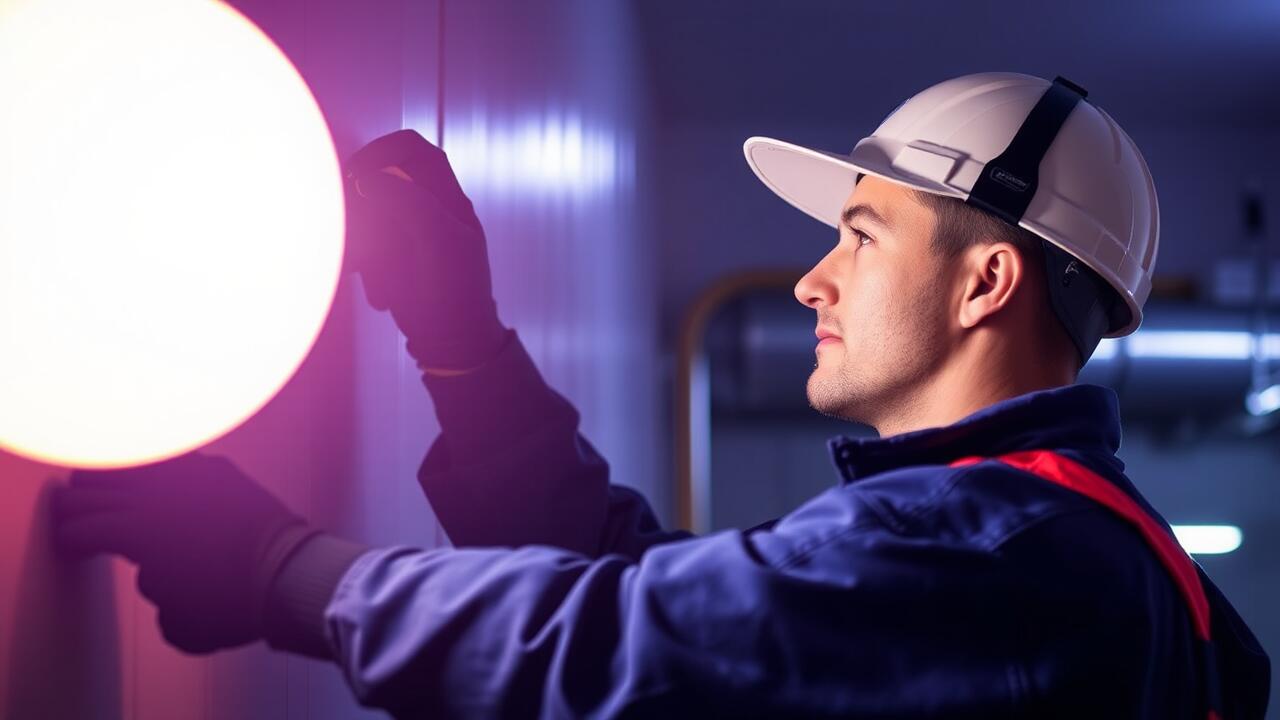
The Role of Natural Light
Natural light plays a crucial role in enhancing the ambiance and functionality of a home. It not only brightens spaces but also impacts the overall mood, making rooms feel more inviting and open. Skillful architectural design can harness sunlight effectively, reducing dependency on artificial lighting during the day. Proper window placement, skylights, and open layouts are essential considerations for maximizing this natural resource.
Homeowners in River Oaks can benefit significantly from natural lighting. By integrating wider windows and glass doors, they can allow sunlight to flood their interiors. Moreover, these features contribute to energy savings and lower electricity bills. Utilizing energy-efficient strategies in conjunction with natural light can transform homes. Lighting installation in Montrose, Houston, offers numerous options to complement this approach, ensuring that spaces are illuminated beautifully and sustainably.
Maximizing Daylight in Your Home
Incorporating natural light into your home not only enhances aesthetics but also contributes to energy savings. One effective strategy is to optimize window placement and size. Larger windows allow for more sunlight, which can reduce the need for artificial lighting during the day. Additionally, using light-colored and reflective materials in your interior design can help distribute natural light throughout the space, creating a brighter atmosphere. Consider consulting professionals specializing in Lighting Installation in Westchase, Houston, to find the best solutions tailored to your home's layout.
Another approach involves utilizing skylights or light tubes, which can dramatically increase the amount of daylight entering a room. These fixtures can be installed in various areas of the home, particularly in rooms that may lack direct access to windows. By maximizing daylight, you create a more inviting living space while decreasing reliance on electricity for lighting. This not only benefits the environment but also lowers energy costs, making it a practical choice for homeowners looking to enhance their spaces.
Local Regulations and Incentives in River Oaks
River Oaks, known for its commitment to sustainability, has implemented various local regulations aimed at improving energy efficiency in residential and commercial settings. These regulations promote the use of energy-efficient lighting solutions, which align with broader environmental goals. Homeowners and businesses alike are encouraged to comply with these codes to minimize energy consumption and reduce their overall carbon footprint. Local authorities provide clear guidelines to ensure that new installations adhere to these energy standards.
In addition to regulatory measures, River Oaks offers a range of incentives for residents looking to upgrade their lighting systems. Financial assistance programs and rebates are available for those who choose to invest in energy-efficient options. Local businesses specializing in energy-efficient lighting, including providers of Lighting Installation in Montrose, Houston, often inform clients about these incentives. Taking advantage of such programs not only enhances the aesthetic appeal of properties but also leads to long-term savings on energy bills.
Understanding Energy Efficiency Codes
Energy efficiency codes are essential guidelines that help ensure lighting systems meet specific performance standards. These regulations focus on minimizing energy consumption while promoting sustainable practices. In River Oaks, compliance with these codes can lead to significant reductions in utility bills and a smaller carbon footprint. Ensuring that your home adheres to these requirements is vital for maximizing energy efficiency and contributing positively to the environment.
When considering lighting installation in Westchase, Houston, understanding these codes can provide clarity on what materials and technology to incorporate. Choices such as LED fixtures and smart lighting controls not only fulfill these regulations but also enhance overall comfort and convenience in your space. By staying informed about local energy efficiency codes, homeowners can make informed decisions that align with both regulatory standards and personal sustainability goals.
Upgrading Your Existing Lighting
Upgrading your existing lighting can significantly enhance both the aesthetic appeal and energy efficiency of your home. Start by assessing the types of lighting currently in use. Consider the areas that require more illumination and those that can benefit from softer, mood-enhancing options. Transitioning from traditional incandescent bulbs to LED fixtures is a popular choice, as these modern lights consume less energy and have longer lifespans. Additionally, smart lighting systems allow for tailored adjustments, providing convenience and potential energy savings.
For homeowners interested in professional assistance, many local services provide expertise in lighting solutions. Companies specializing in Lighting Installation in Greenspoint, Houston, offer comprehensive assessments to identify the best options tailored to individual needs. They can guide you through the process of integrating advanced technologies into your home. By making informed decisions and utilizing professional services, the transition to energy-efficient lighting becomes more manageable, resulting in both eco-friendly benefits and reduced utility costs.
Steps to Transition to Energy-Efficient Options
Transitioning to energy-efficient lighting options involves several practical steps. First, assess your current lighting fixtures and identify which ones could benefit from an upgrade. Consider various energy-efficient technologies such as LED bulbs, which consume significantly less energy than traditional incandescent bulbs. Evaluate the intensity and color temperature of the new options to ensure they meet your aesthetic preferences while still maximizing energy efficiency in your home.
Once you have selected your preferred options, plan your lighting installation. Depending on the complexity, you might want to hire professionals familiar with energy-efficient lighting systems. Local companies specializing in lighting installation in Westchase, Houston, can provide invaluable expertise and ensure that the new fixtures are installed correctly for optimal performance and safety. Make sure to check available incentives or rebates that could further support your transition to energy-efficient lighting.
FAQS
What are energy-efficient lighting solutions?
Energy-efficient lighting solutions refer to lighting options that consume less energy while providing the same or better illumination compared to traditional lighting. This includes LED bulbs, compact fluorescent lamps (CFLs), and other technologies designed to reduce electricity usage.
How can I maximize natural light in my home?
To maximize natural light, consider using light-colored paints, strategically placing mirrors to reflect sunlight, keeping windows clean, and using sheer window treatments to allow sunlight to filter through. Additionally, consider rearranging furniture to avoid blocking light sources.
What local regulations should I be aware of in River Oaks regarding energy efficiency?
River Oaks may have specific building codes and regulations that promote energy efficiency. It's important to check with local authorities or visit the city's official website to understand the guidelines and any incentives available for energy-efficient upgrades.
What steps should I take to transition to energy-efficient lighting?
To transition to energy-efficient lighting, start by replacing incandescent bulbs with LED or CFL options, assess your current lighting fixtures for compatibility, establish a budget for upgrades, and consider consulting with a lighting professional for tailored solutions.
Are there any financial incentives for upgrading to energy-efficient lighting in River Oaks?
Yes, there may be financial incentives available for upgrading to energy-efficient lighting, such as rebates or tax credits offered by local government programs. Check with energy providers and local government resources to find out what options are available.




